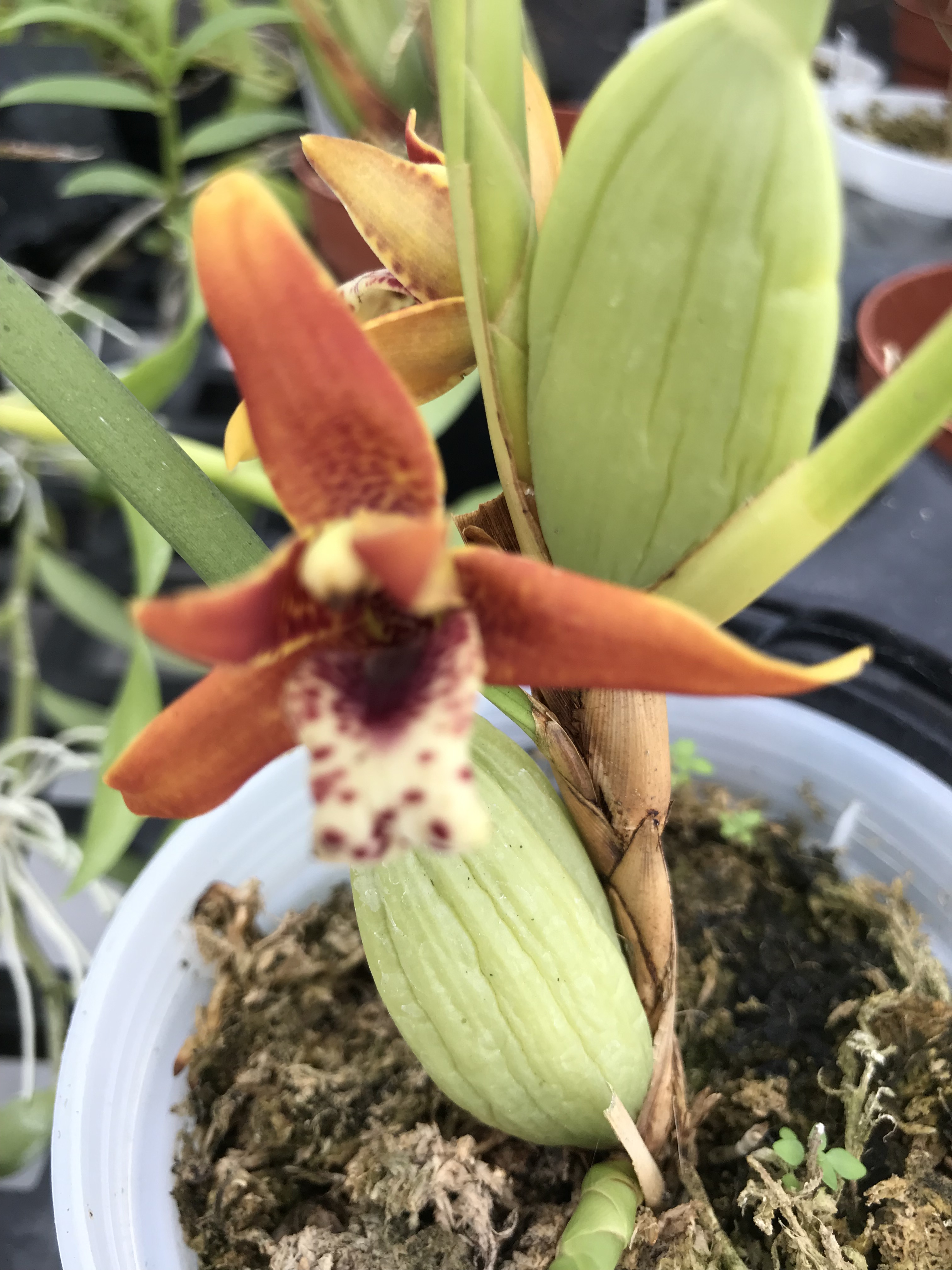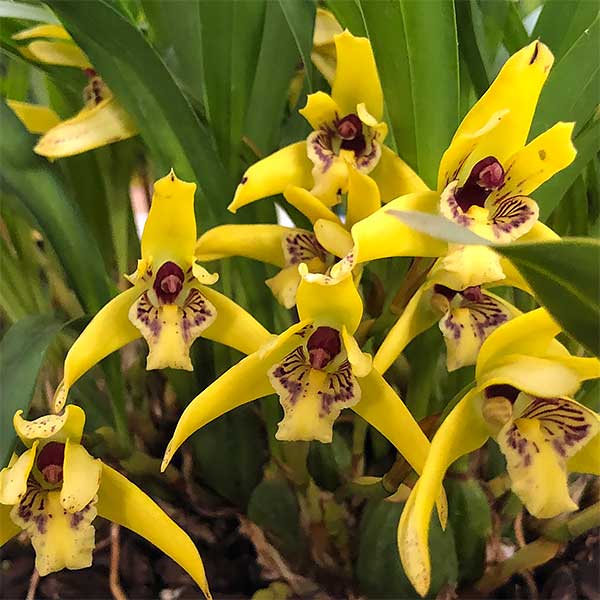Maxillaria Orchid
If you're looking for a unique and beautiful orchid to add to your collection, look no further than the Maxillaria orchid. With over 800 species to choose from, these stunning plants are sure to captivate your attention and provide a delightful addition to any garden or indoor space.
Pain Points Related to Maxillaria Orchid
While the Maxillaria orchid may be a beautiful addition to any collection, there are some common pain points associated with their care. Many people struggle with finding the right growing conditions, such as humidity and light, as well as understanding the proper fertilization and watering routine. In addition, some species of Maxillaria orchids can be prone to pest infestations, which can be difficult to control without using harmful chemicals.
The Target of Maxillaria Orchid
Despite these challenges, many people find the Maxillaria orchid to be a rewarding and worthwhile addition to their collection. These orchids are known for their unusual and striking blooms, which can range in size from small and delicate to large and bold. They are also quite versatile in terms of growing conditions, with many species able to thrive in relatively low light and with minimal attention.
Summary of Main Points Related to Maxillaria Orchid
Overall, the Maxillaria orchid is a fascinating and beautiful plant that is well worth considering for any orchid enthusiast. Whether you are a seasoned gardener or just starting out, these stunning orchids offer a rewarding and unique addition to any collection. With proper care and attention, you can enjoy their beautiful blooms for years to come.
Maxillaria Orchids and Personal Experience
One of my personal favorite Maxillaria species is the Maxillaria tenuifolia, also known as the "Coconut Orchid." This orchid is known for its unique and delightful fragrance, which is often described as being reminiscent of coconut, vanilla, or even cinnamon. I was immediately drawn to this orchid by its unusual scent and delicate, pale pink blooms.
To care for my Maxillaria tenuifolia, I ensure that it gets plenty of bright, indirect light and ample humidity. I also make sure to water it thoroughly but not too often, as this species can be susceptible to root rot. With a little bit of care and attention, my Maxillaria tenuifolia has blossomed into a stunning and unique addition to my collection.
Maxillaria Orchids and Indoor Growing
While the Maxillaria orchid is often grown outdoors in tropical climates, it is also well-suited to indoor growing in cooler regions. If you are interested in growing Maxillaria orchids indoors, there are a few important things to keep in mind.
First, it is important to choose a species that is well-suited to indoor conditions, as some species may struggle to thrive in low light or with limited humidity. Additionally, it is important to provide ample air circulation to prevent any pest infestations or fungal growth.
Finally, providing your Maxillaria orchid with the right growing medium is key to ensuring its success indoors. Most Maxillaria orchids prefer a well-draining mix of orchid bark and perlite, although some may also benefit from the addition of sphagnum moss or other organic materials.
Maxillaria Orchid Care and Fertilization
To keep your Maxillaria orchid healthy and thriving, it is important to provide it with regular fertilization. Most orchid experts recommend using a balanced orchid fertilizer at half-strength every two weeks during the growing season, and then reducing fertilization during the winter months.
It is also important to pay close attention to your Maxillaria orchid's watering needs, as over- or under-watering can be a common cause of stress for these plants. Most species prefer to dry out partially between waterings, but may require more frequent watering during periods of hot, dry weather.
Question and Answer About Maxillaria Orchid
Q1: What is the best growing medium for Maxillaria orchids?
A: Most Maxillaria orchids prefer a well-draining mix of orchid bark and perlite, although some may also benefit from the addition of sphagnum moss or other organic materials.
Q2: What is the best fertilizer for Maxillaria orchids?
A: Most orchid experts recommend using a balanced orchid fertilizer at half-strength every two weeks during the growing season, and then reducing fertilization during the winter months.
Q3: What is the ideal temperature for Maxillaria orchids?
A: Most Maxillaria orchids prefer temperatures between 60-80 degrees Fahrenheit, with moderate to high humidity levels.
Q4: How often should I water my Maxillaria orchid?
A: Most Maxillaria orchids prefer to dry out partially between waterings, but may require more frequent watering during periods of hot, dry weather.
Conclusion of Maxillaria Orchid
The Maxillaria orchid is a unique and beautiful addition to any garden or indoor space, offering striking and unusual blooms and a wide range of growing conditions. Despite some of the challenges associated with their care, many orchid enthusiasts find these plants to be a rewarding and delightful addition to their collection. With proper care and attention, you can enjoy the beauty and charm of the Maxillaria orchid for years to come.
Gallery
Maxillaria Tenuifolia (Coconut Orchid) - BELLE DANSE ORCHIDS

Photo Credit by: bing.com / maxillaria tenuifolia orchid
Maxillaria Tenuifolia Orchid Care | Plant Reference

Photo Credit by: bing.com / maxillaria tenuifolia orchid orquideas orchids jardinagem orquídeas orchideen orquídea 23may paisagismo urbana roxas arranjos orquidea zonafotografos
Perfume Project NW: MAXILLARIA ORCHID SPECIES: WOOD AND COCONUT

Photo Credit by: bing.com / maxillaria orchid species coconut wood perfume nw project
Maxillaria Orchids - Care And Cultivatio | NurseriesOnline

Photo Credit by: bing.com / maxillaria orchids nurseriesonline
Maxillaria Ochroleuca 1 | Elite Orchids

Photo Credit by: bing.com / maxillaria ochroleuca orchids psychopsis paphiopedilums
0 Response to "Maxillaria Orchid"
Post a Comment